It’s almost a standard question: SEO clients want to know how quickly they’ll see results from link-building efforts.
They want positive change as soon as possible and it makes sense – a lot of time, work, and money go into building quality links.
Realistically, though, it can take 3 to 12 months to see any change in your site’s visibility.
It’s helpful to consider a few important factors that influence the impact velocity of link building, too.
Let’s look at these factors and a few examples of how fast link building brings results in different niches.
6 Aspects That Influence The Effectiveness Of Link Building
In my experience building links for different companies, I’ve noticed these factors, but results will vary depending on individual cases.
Let’s break down these factors influencing link-building effectiveness in more detail.
1. The Authority Of A Site
Domain ranking (DR) is a metric that includes how many backlinks a website has received from trusted resources. Usually, the higher the DR, the higher the website’s trust score.
You can check your site’s DR with tools such as Ahrefs, Semrush, MOZ, and Majestic.
Sites that initially had a good DR will see the results faster.
The lower the website’s DR, the longer you’ll wait for the links built to bring positive changes. But it also depends on the niche.
Typically, the DR should be no less than 60 for B2B brands and 30 for B2C companies. If your domain ranking is lower, you’ll have to wait longer for results.
Essentially, a website with good online authority may get more chances to rank even better.
2. Positive And Negative Traffic Trends
Simply put, the positive trend speeds up the effects of a link-building campaign, while the negative can hinder the results in the short run.
Google tracks the dynamics and gives preference to those resources that show a stable growth trend.
If a website has a negative traffic trend, it can be challenging to return to the initial point of growth because of reasons that impacted the website’s relevance and trust score.
3. The Brand’s Popularity
One of the crucial factors in link building is whether a website you’re getting a link from is an authoritative brand or not.
A helpful indicator of this would be the percentage of branded traffic a given website receives.
You can check this with tools such as Semrush.
4. Types Of Pages
Typically, the links built to content pages bring positive results faster than commercial pages.
In general, commercial pages target only a handful of keywords, substantially lowering your chances for success.
Also, remember that Google search gives preferences to content pages.
5. Level Of Competition In A Niche
In B2B, for instance, link building is popular, so choosing just this strategy alone to grow your website may not be enough. You have to combine it with producing high-quality content and developing your brand.
But if you come from B2C, link building can become your competitive advantage.
6. Monthly And Overall Link Building Budget
The average cost per link across the industry varies. For example, Ahrefs found that it’s around $350 while Siege estimates about $500.
However, the price per link depends on how authoritative a particular site is. For instance, a link on a site with a domain rating by Ahrefs of 50 and organic traffic of 2,000 per month is not equal to a link from a website with a DR of 80 and organic traffic over 100,000.
So, link-building agencies often set different pricing based on a site’s domain rating and organic traffic.
Based on this, a good starting point might include $3,000 monthly expenses and a $30,000 overall budget.
However, you may need to invest at least $10,000 a month in some niches to start seeing the results.
And, it’s always good to remain realistic about your individual situation and focus on targeting the right keywords rather than trying your luck and failing.
Which factor is the most crucial?
All of them play a significant role to a certain extent.
However, building links on a brand website that sells a real product or service is important.
These websites have the highest growth potential, and the impact of building links to these sites will only grow over time.
5 Examples Of How Link Building Works In Different Niches
Alright, we’ve discussed factors that can speed up or slow down link-building campaign results.
But to avoid making empty claims, let’s look at a few link-building campaigns and how fast they managed to show positive changes.
The first example is a real challenge many people might consider a lost cause.
This site had zero organic traffic, no authority, no branded traffic, and came from a very competitive niche – digital marketing.
So, it’s not surprising that the website didn’t show any changes in organic traffic in the first eight months, although the number of keywords the website ranked for in SERPs grew a bit.
Then, more tangible results appeared after close to 12 months of work. The website acquired 250+ links with an overall budget of $100,000.
Here’s what this site’s trend looks like now. The number of referring domains grew gradually between January 2021 and January 2022.
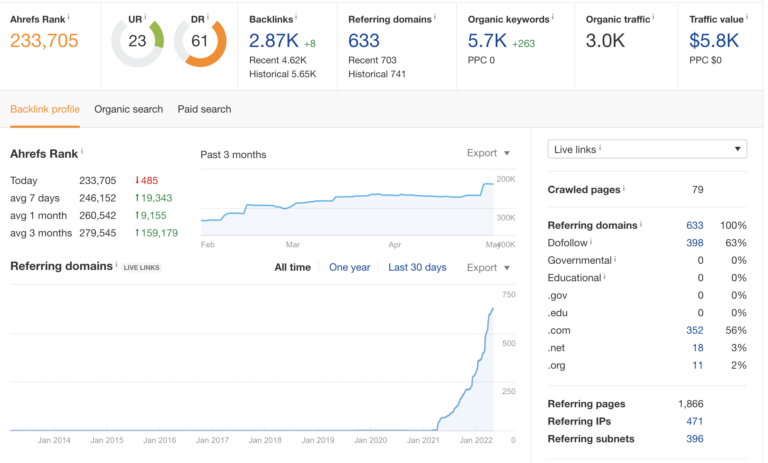 Screenshot from Ahrefs, May 2022
Screenshot from Ahrefs, May 2022The graph below shows when the organic traffic to this website started growing compared to when it started building links – almost 10 months later.
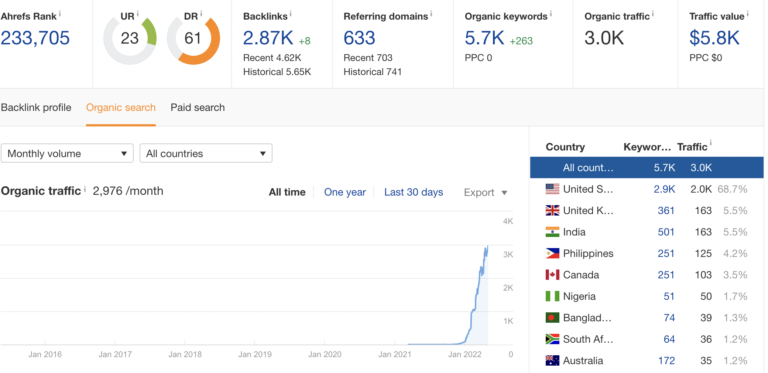 Screenshot from Ahrefs, May 2022
Screenshot from Ahrefs, May 2022As of now, according to Ahrefs, the organic traffic to this brand’s website is 3,000.
However, Google Search Console shows it even higher.
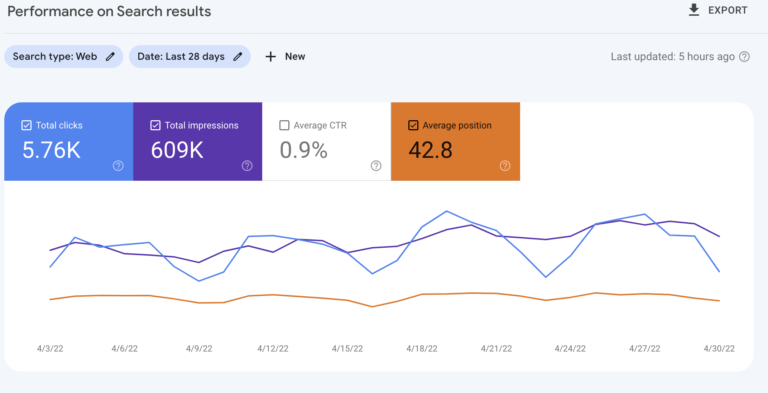 Screenshot from Ahrefs, May 2022
Screenshot from Ahrefs, May 2022This website took a little over a year to show results from link-building efforts.
The next example is a B2C brand in the niche of home improvement.
The company built 58 links to its website with an overall budget of less than $20,000.
The link-building efforts started in December 2021.
 Screenshot from Ahrefs, May 2022
Screenshot from Ahrefs, May 2022Significant changes in organic traffic started showing in less than five months after the brand launched its link-building campaign.
You can see how the traffic grew in the graph below.
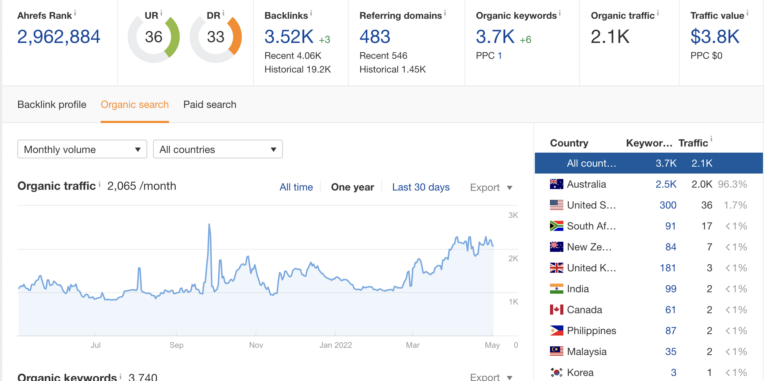 Screenshot from Ahrefs, May 2022
Screenshot from Ahrefs, May 2022Here are a couple more cases to illustrate how link-building results appear for B2B vs. B2C.
This is a new B2B brand’s website with absolutely no traffic. This website acquired 40 links for a $15,000 overall budget and ranked by search terms delivering traffic worth $1,600.
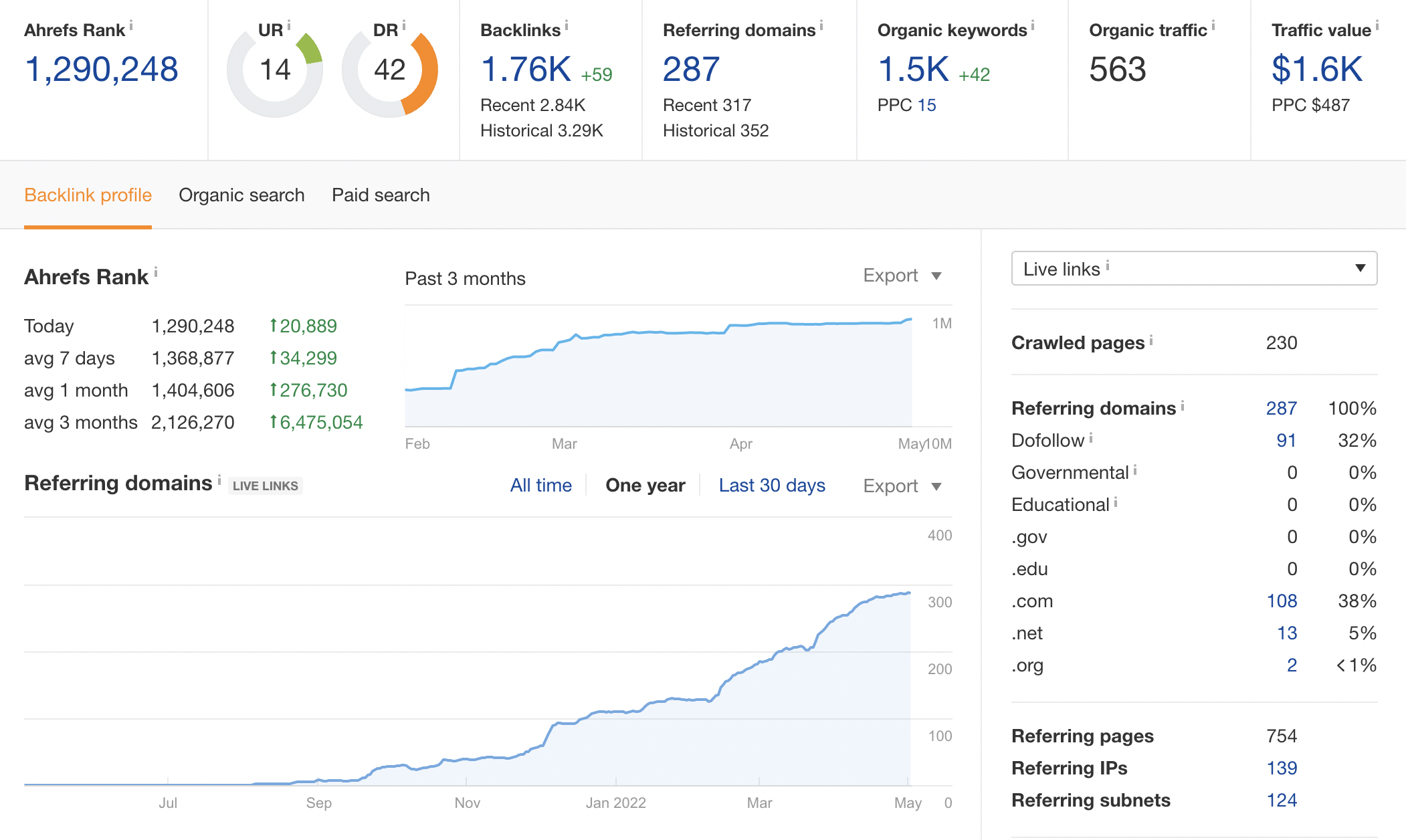 Screenshot from Ahrefs, May 2022
Screenshot from Ahrefs, May 2022The first impact of link-building efforts appeared three months after – approximately from November 2021 to December 2021.
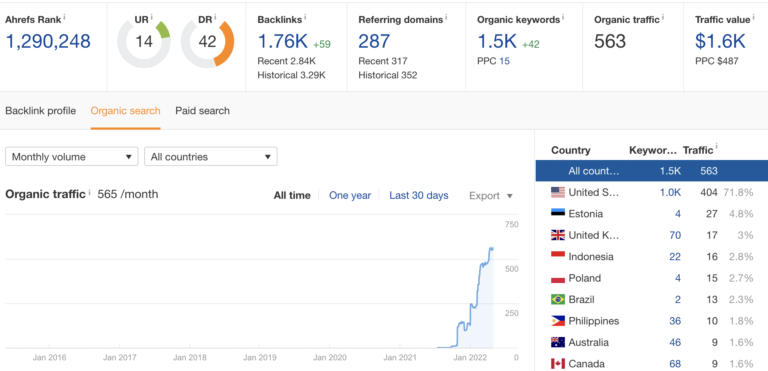 Screenshot from Ahrefs, May 2022
Screenshot from Ahrefs, May 2022It’s worth mentioning that it is an absolutely new brand.
But would the link-building results come faster if the brand was already well-known?
Yes. This company has been around a while, with a website getting tons of traffic and links. It’s also from a competitive niche of SEO tools.
In this case, the site had a slight boost with only 27 links to a page that already had some links. So, it’s 27 links against those 40 that the previous website had to build.
As a result, the organic traffic to it doubled after five months.
 Screenshot from Ahrefs, May 2022
Screenshot from Ahrefs, May 2022This website had to build fewer links, but its effects also came much faster. The link-building campaign started in August 2021, and you can see the first results in October 2021.
Another example is a new B2C brand selling supplements in the self-care niche.
It built over 50 links to its site with an overall $12,000 budget.
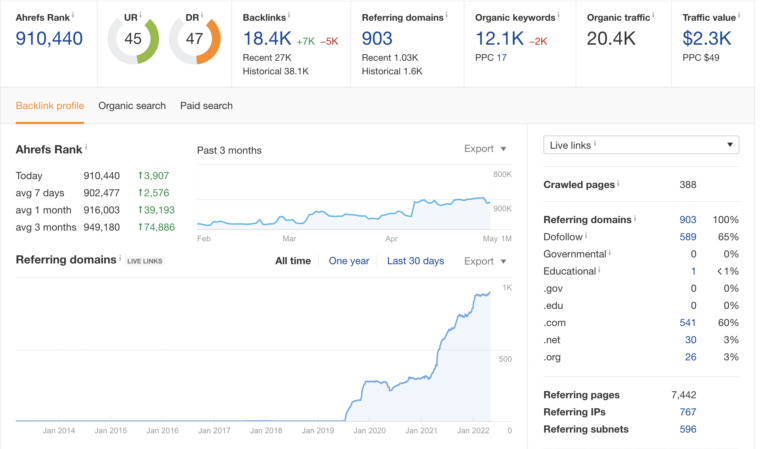 Screenshot from Ahrefs, May 2022
Screenshot from Ahrefs, May 2022As for the results, the link-building campaign started close to the end of 2021, and the first changes in organic traffic appeared after two to three months.
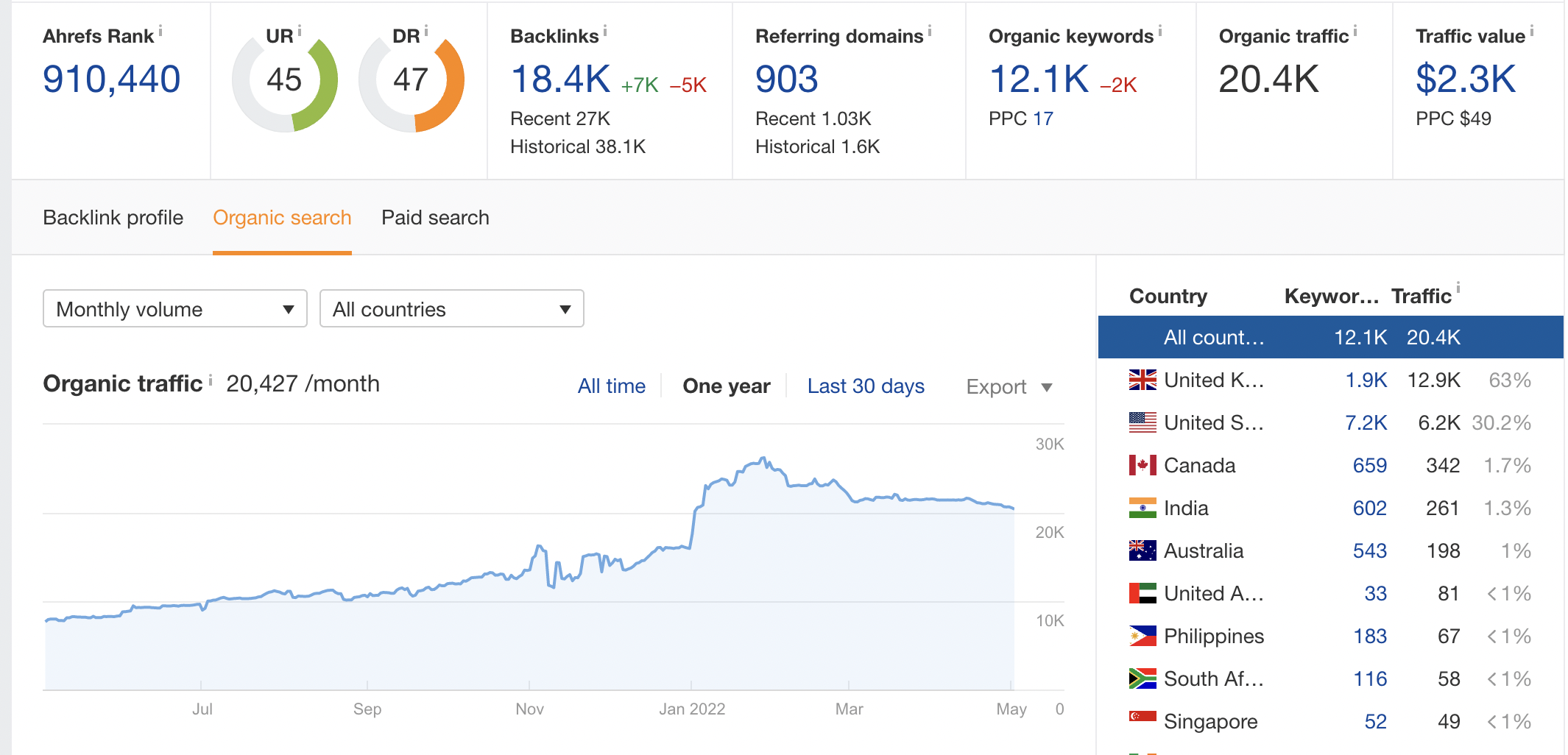 Screenshot from Ahrefs, May 2022
Screenshot from Ahrefs, May 2022Sometimes the deliverability of link-building campaigns is faster for B2C brands, proving that link building in this niche is far less competitive than in B2B.
Nevertheless, if you look at all the examples, you’ll see that the time when a company starts seeing its first tangible results depends on each case.
Over To You
In most cases, results from link-building efforts start showing up within three to 12 months.
However, it still depends on a few crucial factors.
- The site’s authority.
- Positive and negative traffic trends.
- The brand’s popularity.
- Types of pages providing the links.
- Level of competition in a niche.
- Your link-building budget.
Also, build links on sites that represent trustworthy brands. This way, positive changes to your site’s performance will continue.
More resources:
Featured Image: alexdndz/Shutterstock
